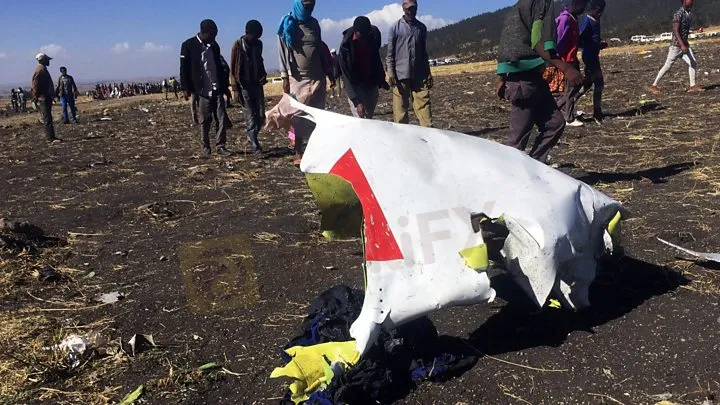简体中文
繁體中文
English
Pусский
日本語
ภาษาไทย
Tiếng Việt
Bahasa Indonesia
Español
हिन्दी
Filippiiniläinen
Français
Deutsch
Português
Türkçe
한국어
العربية
Boeing 737: Singapore bars entry and exit of 737 Max planes
Abstract:Image copyrightReutersImage caption SilkAir's six Max 8 aircraft will remain grounded for now Singa
Image copyrightReutersImage captio
SilkAir's six Max 8 aircraft will remain grounded for now
Singapore's Civil Aviation Authority (CAAS) has temporarily suspended all Boeing 737 Max models from flying into and out of the country.
The decision comes after an Ethiopian Airlines Boeing Max 8 crashed on Sunday, killing 157 people on board.
It was the second fatal accident involving that model in less than five months.
Singapore's Changi is the sixth-busiest airport globally, but it's unclear if flights will be cancelled.
Several airlines and regulators around the world have already grounded the Max 8 model, following the crash.
Airlines ground 737 Max 8 jet
Singapore is believed to be the first country to ban all variants of the Max family of aircraft. The suspension goes into effect from 14:00 local time (06:00 GMT).
SilkAir, which operates six Boeing 737 Max 8 aircraft will be affected, as will China Southern Airlines, Garuda Indonesia, Shandong Airlines and Thai Lion Air, CAAS said in its statement.
The aviation authority said it was working with Singapore's Changi Airport Group and the affected airlines to minimise any impact to travelling passengers.
In the US, the country's Federal Aviation Administration told airlines on Monday it believes Boeing's 737 Max 8 model to be airworthy, despite the two fatal crashes.

Media playback is unsupported on your device
Media captionThe BBC's Emmanuel Igunza, at the scene, said there was a huge crater at the site of the crash
On Sunday, an Ethiopian Airlines plane en route from Addis Ababa to Nairobi crashed six minutes after take-off, killing all passengers and cabin crew.
The incident followed a Lion Air 737 Max 8 crash in Indonesia that killed 189 people in October 2018.
What is a Boeing 737 Max aircraft?
The Boeing 737 Max family of aircraft are the latest iteration of the company's successful 737 line. The group includes the Max 7, 8, 9 and 10 models.
By the end of January, Boeing had delivered 350 of the Max 8 model out of 5,011 orders.
A small number of Max 9 aircraft are also already operating while the Max 7 and Max 10 variants are due to be rolled out over the next few years.
The Max 8 that crashed on Sunday was among six of 30 that Ethiopian Airlines had ordered as part of its expansion. It underwent a “rigorous first check maintenance” on 4 February, the airline said.
Following last October's Lion Air crash in Indonesia, investigators said the pilots had appeared to struggle with an automated system designed to keep the plane from stalling, a new feature of the jet.
It is not yet clear whether the anti-stall system was the cause of Sunday's crash. Aviation experts say other technical issues or human error cannot be discounted.
What have US authorities said?
US aviation officials have said the 737 Max 8 is airworthy and that it was too early to reach any conclusions or take any action.
US Transportation Secretary Elaine Chao on Monday said the FAA would “take immediate and appropriate action” if a defect was found in the Max 8.
Boeing has confirmed that for the past few months it has been developing a “flight control software enhancement” for the aircraft.
The delay that saved a man's life
More about Boeing 737 Max 8
Ethiopian Airlines: Africa's largest airline
Paul Hudson, the president of FlyersRights.org and a member of the FAA Aviation Rulemaking Advisory Committee, though called for the plane to be grounded.
“The FAA's 'wait and see' attitude risks lives as well as the safety reputation of the US aviation industry,” Mr Hudson said in a statement on Monday.
Disclaimer:
The views in this article only represent the author's personal views, and do not constitute investment advice on this platform. This platform does not guarantee the accuracy, completeness and timeliness of the information in the article, and will not be liable for any loss caused by the use of or reliance on the information in the article.
WikiFX Broker
Latest News
How to Automate Forex and Crypto Trading for Better Profits
Is Infinox a Safe Broker?
How Did the Dollar Become the "Dominant Currency"?
Is Your Zodiac Sign Fated for Stock Market Success in 2025?
Currency Calculator






